Check out for more content https://pinterest.com/t3chr3ad3r/ • t3chr3ad3r.wordpress.com
Don't wanna be here? Send us removal request.
Text
War, Battles and Sieges: Keeping your Army in Line

The army has assembled. You have gathered all your knights and conscripts in the camp. Now we must make them an army.
Factions
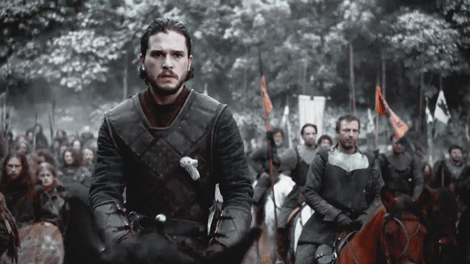
Armies are not just sizeable groups of men with weapons trying to kill the other side. Well technically they are but they aren't just a mass of people. A commander can be the Monarch, a member of the royal family or anybody of rank. Under the commander are the Constables and Marshals. The troops were divided into companies of 20 men, grouped in masses of a hundred, then into thousands. Like every group project there will be factions, all using different methods to achieve a victory. Let's look at each rank of fighters.
Knight: The knight, in basic terms, is a mounted soldier. Most knights are noble or even royal yet some could be common men rewarded for bravery or leal service. The cost of maintaining a knight would be large. They would bring their own armour, horses and servants but may be provided replacements if these are lost. The knights fell into two categories- the banneret and the bachelor. The first was entitled to a banner on the field.
Light Cavalry: The light cavalry is made of mounted men who wore light armour and wielded lighter weapons such as lances or bows. The light cavalry was usually made up of wealthy commoners. Some officers in the light cavalry would be knights or have been trained the same way. Light cavalry could be used as scouts, skirmishers or outflankers.
Archers: The archers were assets to any army. The rank always included skilled and trained soldiers. To train a bowman you start with the grandfather, it was said.
Infantry: The infantry were made up of mostly unskilled fighters recruited from the common class. Some of the infantry may be skilled from old campaigns and such. This is the largest portion in may mediaeval armies. They would be armed with spears, pikes, axes, swords and perhaps shields.
Marching
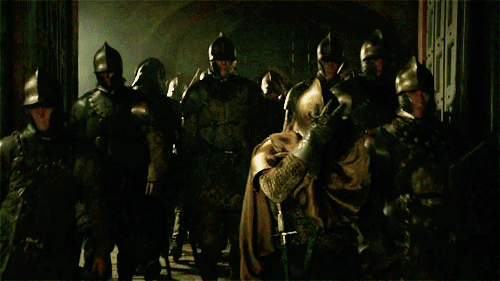
An army will have to move from one place to the next. Here is a helpful table I found (credit where credit is due).
However, one must consider the army's size, health, load and the terrain they travel over. An army on the march must travel in certain formations to keep them safe and keep the army intact. An army will always be vulnerable on the road. Here is a rough doodle of what an army on the move should be laid out like.
An army are like that goldfish you had as a kid to teach you responsibility. They need to eat. You need to feed them. And just like that goldfish, it can be a daunting task. An army will always need:
Weapons: Which can be bought, forged and pillaged from the dead enemies/allies.
Supplies

Food: Food can be bought and foraged from the land about the army. Low food will lead to starving and weakened soldiers who may desert or turn to banditry.
Water: Can be sourced from any river, stream, pool. Bad water can lead to dysentery and death.
Fodder: An army will need something to feed their pack animals with. The oxen, horses and mules of any force need fodder to survive any march.
Morale: Your army will not fight without belief. It can be belief in a righteous cause, a god, a vow, victory or financial gain. A confident army will be fearless. An army with no spirit will not fight as fiercely.
An army is a city on the move. Every city has laws and rules. The Romans were very strict with their laws.
For dereliction of duty or even desertion a the soldier would be stoned in punishment for all the lives he could have put in harm's way.
Camp Rules
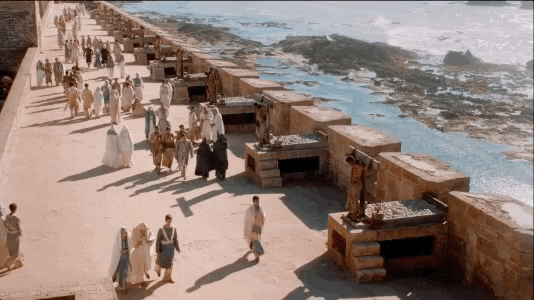
Stoning and public whippings and beating were inflicted on thieves, perjurers and anybody getting caught three times for a minor infraction
For treason, the guilty would be sewn in a sack and thrown into a nearby river or lake
(There are plenty more examples but these are the most interesting)
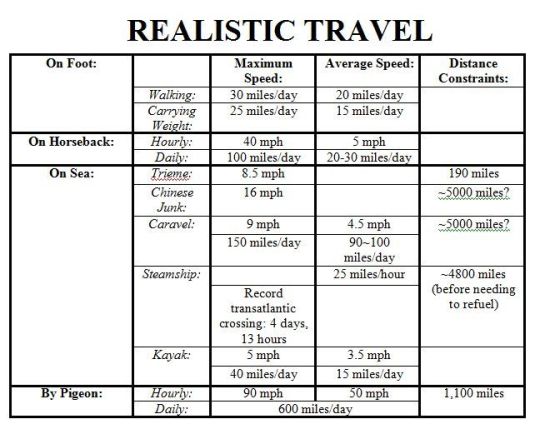
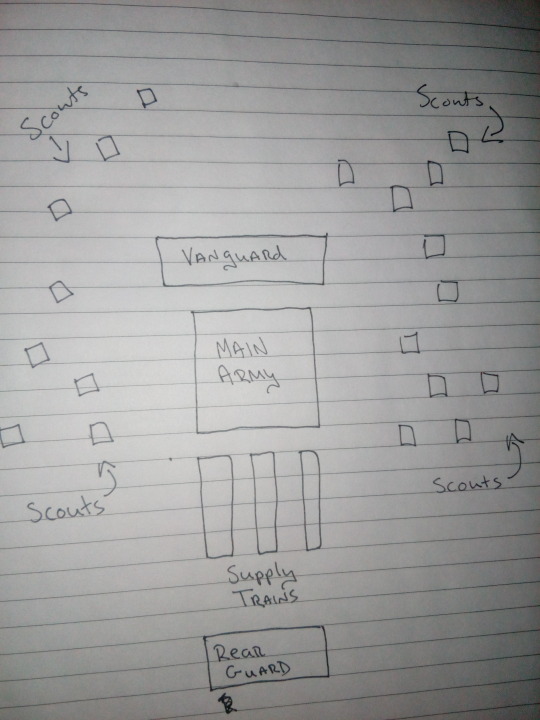
2K notes
·
View notes
Text
What I learned while self-publishing.

@milkyteefs asked:
I’m unsure about the entire self-publishing world! Do you have a basic outline of the process? Some key highlights/headings of how you started and what connections you needed to make? Thanks again! <3
I went through the process of self-publishing Our Bloody Pearl this summer. Even with all the guides in the world it turned out to be a very grueling experience. I’ll be doing it again with Quasi Stellar soon, but I also hope to traditionally publish The Warlord Contracts trilogy.
First, let’s get this out of the way: Self published books are often very bad.
But they don’t have to be.
Self publishing requires you, the writer, to either wear the hat of everyone else at a publishing house, or be your own investor and pay for professionals to do the jobs you can’t. If you’re willing to put in that effort and money then you can come out with a more professional book than you might have had you published traditionally. If you’re not, then self publishing might not be the right road for you.
Now then, how do you self publish in a way that produces a professional book?
Fifteen Basic Steps to Self-Publishing:
Keep reading
2K notes
·
View notes
Text
WC Camp Nano Prep Series: Part Two
NAVIGATION | FIRST | NEXT
Hi everyone!
Welcome to the second installment of the Writeblr Connects’ Camp Nano Prep series! This week, we’re talking about…you guessed it…

CHARACTER DEVELOPMENT!
Character development is an absolutely vast topic. But here, I’m going to distill things down to three main points:
1. Why you need to spend time developing your characters 2. What the “ultimate” goal of character development is 3. Character development methods (plus resources to get you started with those methods)
So let’s go!
WHY YOU NEED TO DEVELOP YOUR CHARACTERS
Say you’re someone who considers yourself a “plot-driven” writer. You’re deep into the middle of your first draft and you mention your protagonist’s eyes…
…But you can’t remember what color they are.
You then go ripping through the last 100+ pages (because it would have been too easy for you to need this earlier in the manuscript) and find that your protagonist’s eye color has changed not once, not twice but three times.
I’ve been there. Done that. It is is a Bad Place™ to be as a writer. And I could have saved myself that trouble if I had done a bit of character development.
To me, character development is anything that requires stepping away from your actual manuscript to make notes on your characters. Those notes can be on their physical description, their wants/needs or even their most common reactions to emotional events. Usually most of this is done prior to your first draft. But, you can still have character development processes cropping up throughout any point in the project’s lifecycle. The most important thing is to write it down in a separate note, not in your manuscript. You need to have all of your information on a single character in one place. That way, you don’t end up digging through a draft multiple times to find tiny details.
Now, as I said before, this is a huge topic. It’s easy to get bogged down in a million little details and spend more time on the development of a character rather than actually writing them. That’s where our next topic comes in.
Keep reading
410 notes
·
View notes
Text
How I plotted my novel
With NaNoWriMo around the corner, I thought I might show you how I turn an idea into an outline.
This is the story structure I used:
0% inciting incident
0%-20% introduction in the world, ends with a point of no return
20% first plot point: the hero receives his marching orders
20%-50% response to the first plot point
35% first pinch point: reminder of the nature of the antagonistic force
50% midpoint: big fat plot twist that changes the hero’s AND reader’s experience
50%-80% attack: the stakes are higher now
65% second pinch point: again reminding the reader of the antagonistic forces at hand
80% second plot point: the final injection of new information into the story to give the hero everything she needs to become the primary catalyst in the story’s conclusion (no new information past this point)
80%-100% resolution + final conflict + return home

I didn’t make this up. I think it’s by Larry Brooks, if The Internet informs me correctly. Fun Fact: once you pay attention to it, you’ll see this structure everywhere. Just take a look at any Harry Potter book, for example.
These points are the “bones” of my story. Next, I decided what “flesh” to put on them.
I simply made a list of things I like to read about:
Books about books and libraries
Magic
Quirky characters
Intelligent, fast-paced and sometimes silly
So, I combined this list and the structure points into a story that makes sense. Because I don’t want to spoil my plot / I am still to shy about my wip, I will make up a new plot for this post, so I can show you.
0%: The hero does something magical without knowing how she did it. She discards it, because everybody knows it can’t have been real.
0%-20%: We see the daily life of the hero: she is unhappy because all she wants to do is read, but she is not allowed to. She reads in the dead of night and is punished for it by her evil stepcousin. She finds a book on magic.
20% It all clicks together: she can do magic!
20%-50% The daily life for the hero changes. Instead of reading all night, she practices magic. She now loves books even more. She has little victories over her evil stepcousin, but hasn’t won yet.
35% The evil stepcousin finds out that she can do magic and takes away the magic book.
50% She discovers she can do magic without the book.
50%-80% The hero is not the only one who is bullied by the evil stepcousin. Her younger cousin is a victim as well, and he doesn’t have magic to defend himself. The stakes are raised, this is bigger than herself now. The younger cousin also wants to read, so they have several bonding moments over reading.
65% The evil stepcousin hurts the younger cousin, he’s in a coma now.
80% The hero discovers the evil stepcousin could do all these evil things because he knows magic too.
80%-100% The hero confronts the evil stepcousin, fights him off, nearly loses but wins in the end. He gives up and releases his power over the younger cousin who wakes up from the coma.
It’s not the most genius plot ever, but I literally made this up in minutes. So can you! And imagine the genius plot you can come up with if you spend more than a few minutes on it.
Then I calculated how many scenes I need in which part of the story. My wip is a YA or 12+ book, so I want it to contain about 75,000 words in total. I want my scenes to be around 1,000 words long to keep it snappy, so I need 75 scenes.
Scene number 1 (0%) is the inciting incident, scene number 15 (20%) is the first plot point, scene number 26 (35%) is the first pinch point, scene number 37 (50%) is the midpoint, scene number 49 (65%) is the second pinch point, scene number 60 (80%) is the second plot point and scene 75 (100%) is the last scene.
Some sidenotes on the 1,000-word scenes:
That’s more of a vague rule of thumb than a strict rule. If your scene needs to be longer or shorter, make it longer or shorter of course. My wip has some 2,300-word scenes as well.
Having 1,000-word scenes does not mean I have 1,000-word chapters, that would be really short. I will divide my novel into chapters after I’m finished writing my first draft.
For NaNoWriMo, maybe you could write scenes of 1,667 words, so you do one scene per day. A 50,000-word novel has 30 scenes of 1,667 words. Inciting incident is at scene 1, first plot point at scene 6, first pinch point at scene 11, midpoint at scene 15, second pinch point at scene 20, second plot point at scene 24 and scene 30 is your last scene. That’s just an idea, you got to see what works for you.
Then I made up in one sentence what will happen in every scene. For example: “They meet the dragon and he sends them on a sidequest.” Now my outline consists of 75 one-sentence scenes. This way, I prevent the problem of the sagging middle and other pacing problems and I still get to surprise myself when writing.
From those one-sentence scenes, I flesh out every scene into a first draft, using the process I described in my post How I never have to face an empty page when I write.
And that’s my first draft! I hope everything is clear. Feel free to ask me questions if it isn’t.
I’m gonna tag a few people I admire, who I hope are interested. If you aren’t, feel free to ignore me, or message me to take you off my tag list. If you would like to be added to my writing advice tag list, let me know.
Keep reading
23K notes
·
View notes
Text
Rejoice, “let’s fake a relationship for Christmas” fanfic season is upon us.

195K notes
·
View notes
Text
10 Fast Tips for Querying
1. Establish a clear vision of your book in the opening lines. If you have that magic gift for summarizing your book in one compelling sentence, then put that line first. Draw the agent or editor in; make them want to read more. Being able to pitch effectively is a hugely important skill that can be developed, with practice. 2. No publishing history? Don’t mention it. In general, don’t write too much about yourself in the letter, unless it directly pertains to the book/your credentials as an author. If you’ve self-pubbed without much success, don’t mention it unless specifically asked. 3. On that note, keep it to one page or less. Long query letters are killer!! Agents/their assistants have to sort through so many letters in a day, don’t make it any harder on them than you need to. 4. If rejected, don’t respond. There are exceptions to this, but not many. If your instinct upon being rejected is to send out a rude email response, don’t… Take a step back, breathe in, breathe out, and move on. It’s not personal. 5. Send requested materials within 48 hours. I know I like to give my work a last once-over before I send it, but this time frame is a good one to keep in mind. Any longer and you risk losing interest. 6. Celebrate the little things. A full, a partial, or even a personalized response are all giant milestones! Trust me, any agent who takes time out of their day to tell you exactly what worked/didn’t work in your manuscript is a GIFT. Even if not all of their points work for you, their feedback could also help you improve your work as a whole. 7. Keep track of who you’ve queried. I’m a spreadsheet kinda gal, but I highly recommend at least keeping a cohesive, frequently updated list on who you’ve got queries out to, the time frames for their responses, and so on and so forth. And SAVE those records! 8. Do your research. ESPECIALLY on those asking for full requests. This came up a lot during pitching events, but there are definitely some people out there with ill intentions. Make sure you research everyone thoroughly before sending your work to them! Querytracker is an excellent resource for this, and also helps when you’re trying to see response times, etc. 9. When in doubt, nudge. If an agent’s website says that they always respond to queries within x amount of weeks and they haven’t yet responded to you, there’s a high chance that your email got lost in the mess. Don’t be afraid to (Politely!) reach out and ask, just in case! 10. Be patent, don’t give up. Querying is a slow game. Besides, even if you don’t end up getting an agent after a hundred queries, you’re bound to have learned something to help you go back, rewrite/write something new, and jump back into the game.
1K notes
·
View notes
Text
You are a freshman collage student. Moving out and living on your own for the very first time. Thankfully, you’ve lucked out and found 2 roommates to share a modestly sized apartment with and they’re the best roommates ever. They don’t steal your food, respect your boundaries, and in their free time offer to hang out and watch movies with you despite their busy schedules. There’s just one problem. You are a hundred percent sure that one of your roommates is the new superhero who’s been going around fighting crime and taking on the local mob. And that the other is the boss of said mob and their mortal enemy. Neither of them notice.
It’s all well and good until one day when you get kidnapped by a rival mob/supervillain and both of your roommates show up to rescue you.
8K notes
·
View notes
Text
You wrote a novel about a demon falling in love with a human. Then, you summon a demon in order to get “real” feedback and constructive criticism. To your surprise, the demon laughs at your work.
22K notes
·
View notes
Text
The main character is a god with amnesia. He loses his memories of his omnipotence and is left in the human world, lost, with strange abilities. Explain what his daily life is like.
3K notes
·
View notes
Text
Ways to un-stick a stuck story
Do an outline, whatever way works best. Get yourself out of the word soup and know where the story is headed.
Conflicts and obstacles. Hurt the protagonist, put things in their way, this keeps the story interesting. An easy journey makes the story boring and boring is hard to write.
Change the POV. Sometimes all it takes to untangle a knotted story is to look at it through different eyes, be it through the sidekick, the antagonist, a minor character, whatever.
Know the characters. You can’t write a story if the characters are strangers to you. Know their likes, dislikes, fears, and most importantly, their motivation. This makes the path clearer.
Fill in holes. Writing doesn’t have to be linear; you can always go back and fill in plotholes, and add content and context.
Have flashbacks, hallucinations, dream sequences or foreshadowing events. These stir the story up, deviations from the expected course add a feeling of urgency and uncertainty to the narrative.
Introduce a new mystery. If there’s something that just doesn’t add up, a big question mark, the story becomes more compelling. Beware: this can also cause you to sink further into the mire.
Take something from your protagonist. A weapon, asset, ally or loved one. Force him to operate without it, it can reinvigorate a stale story.
Twists and betrayal. Maybe someone isn’t who they say they are or the protagonist is betrayed by someone he thought he could trust. This can shake the story up and get it rolling again.
Secrets. If someone has a deep, dark secret that they’re forced to lie about, it’s a good way to stir up some fresh conflict. New lies to cover up the old ones, the secret being revealed, and all the resulting chaos.
Kill someone. Make a character death that is productive to the plot, but not “just because”. If done well, it affects all the characters, stirs up the story and gets it moving.
Ill-advised character actions. Tension is created when a character we love does something we hate. Identify the thing the readers don’t want to happen, then engineer it so it happens worse than they imagined.
Create cliff-hangers. Keep the readers’ attention by putting the characters into new problems and make them wait for you to write your way out of it. This challenge can really bring out your creativity.
Raise the stakes. Make the consequences of failure worse, make the journey harder. Suddenly the protagonist’s goal is more than he expected, or he has to make an important choice.
Make the hero active. You can’t always wait for external influences on the characters, sometimes you have to make the hero take actions himself. Not necessarily to be successful, but active and complicit in the narrative.
Different threat levels. Make the conflicts on a physical level (“I’m about to be killed by a demon”), an emotional level (“But that demon was my true love”) and a philosophical level (“If I’m forced to kill my true love before they kill me, how can love ever succeed in the face of evil?”).
Figure out an ending. If you know where the story is going to end, it helps get the ball rolling towards that end, even if it’s not the same ending that you actually end up writing.
What if? What if the hero kills the antagonist now, gets captured, or goes insane? When you write down different questions like these, the answer to how to continue the story will present itself.
Start fresh or skip ahead. Delete the last five thousand words and try again. It’s terrifying at first, but frees you up for a fresh start to find a proper path. Or you can skip the part that’s putting you on edge – forget about that fidgety crap, you can do it later – and write the next scene. Whatever was in-between will come with time.
135K notes
·
View notes
Note
Please make a post about the story of the RMS Carpathia, because it's something that's almost beyond belief and more people should know about it.
Carpathia received Titanic’s distress signal at 12:20am, April 15th, 1912. She was 58 miles away, a distance that absolutely could not be covered in less than four hours.
(Californian’s exact position at the time is…controversial. She was close enough to have helped. By all accounts she was close enough to see Titanic’s distress rockets. It’s uncertain to this day why her crew did not respond, or how many might not have been lost if she had been there. This is not the place for what-ifs. This is about what was done.)
Carpathia’s Captain Rostron had, yes, rolled out of bed instantly when woken by his radio operator, ordered his ship to Titanic’s aid and confirmed the signal before he was fully dressed. The man had never in his life responded to an emergency call. His goal tonight was to make sure nobody who heard that fact would ever believe it.
All of Carpathia’s lifeboats were swung out ready for deployment. Oil was set up to be poured off the side of the ship in case the sea turned choppy; oil would coat and calm the water near Carpathia if that happened, making it safer for lifeboats to draw up alongside her. He ordered lights to be rigged along the side of the ship so survivors could see it better, and had nets and ladders rigged along her sides ready to be dropped when they arrived, in order to let as many survivors as possible climb aboard at once.
I don’t know if his making provisions for there still being survivors in the water was optimism or not. I think he knew they were never going to get there in time for that. I think he did it anyway because, god, you have to hope.
Carpathia had three dining rooms, which were immediately converted into triage and first aid stations. Each had a doctor assigned to it. Hot soup, coffee, and tea were prepared in bulk in each dining room, and blankets and warm clothes were collected to be ready to hand out. By this time, many of the passengers were awake–prepping a ship for disaster relief isn’t quiet–and all of them stepped up to help, many donating their own clothes and blankets.
And then he did something I tend to refer to as diverting all power from life support.
Here’s the thing about steamships: They run on steam. Shocking, I know; but that steam powers everything on the ship, and right now, Carpathia needed power. So Rostron turned off hot water and central heating, which bled valuable steam power, to everywhere but the dining rooms–which, of course, were being used to make hot drinks and receive survivors. He woke up all the engineers, all the stokers and firemen, diverted all that steam back into the engines, and asked his ship to go as fast as she possibly could. And when she’d done that, he asked her to go faster.
I need you to understand that you simply can’t push a ship very far past its top speed. Pushing that much sheer tonnage through the water becomes harder with each extra knot past the speed it was designed for. Pushing a ship past its rated speed is not only reckless–it’s difficult to maneuver–but it puts an incredible amount of strain on the engines. Ships are not designed to exceed their top speed by even one knot. They can’t do it. It can’t be done.
Carpathia’s absolute do-or-die, the-engines-can’t-take-this-forever top speed was fourteen knots. Dodging icebergs, in the dark and the cold, surrounded by mist, she sustained a speed of almost seventeen and a half.
No one would have asked this of them. It wasn’t expected. They were almost sixty miles away, with icebergs in their path. They had a respondibility to respond; they did not have a responsibility to do the impossible and do it well. No one would have faulted them for taking more time to confirm the severity of the issue. No one would have blamed them for a slow and cautious approach. No one but themselves.
They damn near broke the laws of physics, galloping north headlong into the dark in the desperate hope that if they could shave an hour, half an hour, five minutes off their arrival time, maybe for one more person those five minutes would make the difference. I say: three people had died by the time they were lifted from the lifeboats. For all we know, in another hour it might have been more. I say they made all the difference in the world.
This ship and her crew received a message from a location they could not hope to reach in under four hours. Just barely over three hours later, they arrived at Titanic’s last known coordinates. Half an hour after that, at 4am, they would finally find the first of the lifeboats. it would take until 8:30 in the morning for the last survivor to be brought onboard. Passengers from Carpathia universally gave up their berths, staterooms, and clothing to the survivors, assisting the crew at every turn and sitting with the sobbing rescuees to offer whatever comfort they could.
In total, 705 people of Titanic’s original 2208 were brought onto Carpathia alive. No other ship would find survivors.
At 12:20am April 15th, 1912, there was a miracle on the North Atlantic. And it happened because a group of humans, some of them strangers, many of them only passengers on a small and unimpressive steam liner, looked at each other and decided: I cannot live with myself if I do anything less.
I think the least we can do is remember them for it.
283K notes
·
View notes
Text
A Vampire gets clumsy and is prosecuted for murder. They’re given a life sentence. But, why the hell not, their still gonna be alive by the end of it. (Bonus: intimidating the other inmates, getting solitary confinement to avoid the sun, struggling to get blood)
4K notes
·
View notes
Text
You’re a low-level member of a local mob, and it appears the mob boss has fallen in love with you. He wants you to rule the empire with him, but you want to sweep it out from under him and take control for yourself.
3K notes
·
View notes











